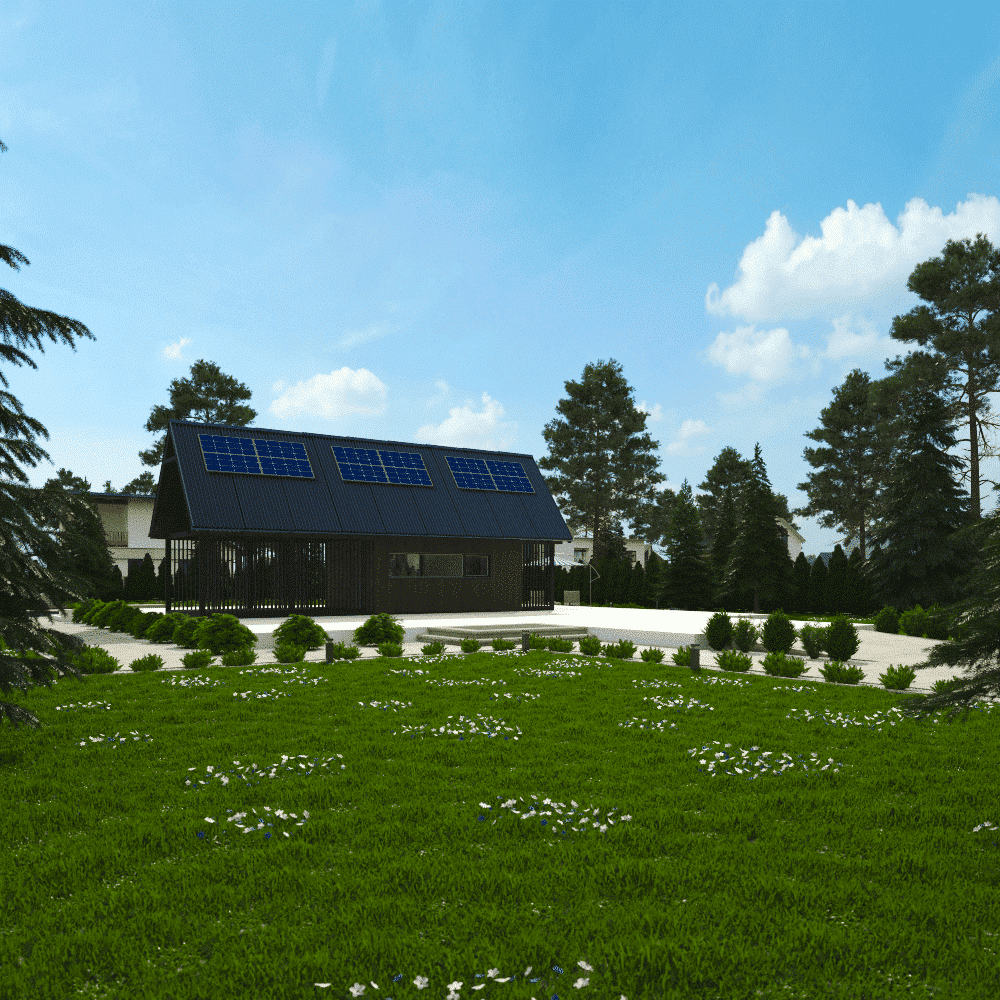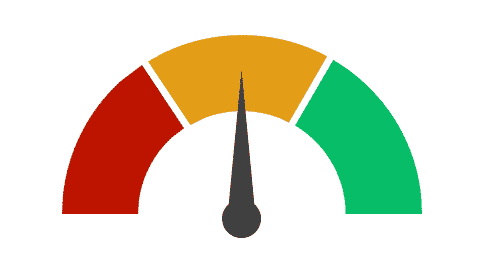
More and more homes are asking for Lithium batteries in order to save daily energy costs. There are indeed several possible approaches to make the choice of the desired equipment.
The first question to ask is whether Lithium batteries will be used for total energy independence for savings or even ease of connection or for a simple reduction in monthly costs.
The cost of the installation will be calculated differently according to several criteria such as the frequency of use for example (every day or only on weekends) but also the equipment connected to this battery.
Let’s start by defining together what the batteries will be used for?!
1- Shed/chalet in a garden with Lithium battery

In the case where the batteries are connected to an outbuilding in a garden for a shed/cottage type habitat, the daily, weekly and monthly usage time may be important in determining the need for batteries. Electrical appliances such as cordless drills and electric mowers will be very greedy but over a relatively short period of time, while a pump for a fish pond or outdoor lighting will consume electricity permanently.
A- Define your need

First, we advise you to define and separate devices that consume electricity permanently from those that have occasional use.
In the second step, it will be necessary to calculate the daily consumption consumed by separating those of occasional equipment often more greedy in electricity consumption. The electricity supply, for example with solar panels, must correspond at least to the daily consumption. Concerning the consumption of exceptional greedy equipment such as an electric drill, the calculation is generally made on its charging time of around 4 hours and its usage time. All that remains is to calculate the Kw/W consumed and its energy storage in a necessary Lithium battery.
The choice to equip yourself with Lithium batteries to reduce your energy consumption is generally calculated differently by focusing more on the monthly consumption linked to equipment that is constantly connected and consuming electricity without taking into account occasional energy consumption.
B- Tip for reducing energy consumption

For permanent electricity consumption, it is always preferable to check the consumption of the equipment and adjust it as accurately as possible. Returning to the example of the water pump for a pond, it is best to take a pump that best suits your needs “do not oversize” and to choose the model that will consume the least between the different brands. For the lighting, the same goes, favoring low-consumption LEDs with the best performance.
C – In conclusion

Isolate the consumption of greedy tools from those that are not so as to then choose a battery that will meet all of the monthly consumption or only the equipment that remains connected and consumes energy daily.
2 – House and living in Lithium batteries
A house is generally much more greedy in electricity than a shed in a garden and this because of very greedy equipment in electricity which can be reduced nowadays. It is useless to define the need for Lithium batteries before having identified and reduced the energy consumption of greedy devices. Therefore, even before choosing lithium batteries for your home, it is best to approach the subject with tips for lower energy consumption.
A- Tip for reducing energy consumption

Appliances consuming energy resources are easily identifiable because they are often the heating and hot water tank. For heating, the fireplace is undeniably a very good energy cost ratio consumed in relation to its restored Kw price, so it is one of the best solutions to use in your home. Another much less expensive solution than conventional electric heating is the heat pump or air conditioning. Before even calculating and thinking about an installation with Lithium batteries for the home, it is best to take an interest and guide a thoughtful choice of the main heating equipment.
The second equipment that consumes a lot of daily electrical use is water heating, which is often one of the main consumptions in a house, causing very high electricity bills. The solutions are easy but can however represent a significant budget to remember the best is to move on a heat pump connected to a hot water tank equipment or solar hot water tank.
Once the 2 generally main sources of consumption in a house have been solved, the question of the Lithium battery becomes very profitable.
B- Define your need

After solving the question of air/water heating, it is important to understand and identify the equipment that consumes daily electricity consumption and those that consume it occasionally. The computer can easily consume 400w compared to LED lighting (a bulb consumes 7w as standard). Don’t worry, there is no need to worry because in normal times the computer is not in permanent operation, but this remains a consumption to be taken into consideration when choosing the Lithium battery.
In a habitat, the daily consumptions in addition to those discussed in (A) are lighting, equipment such as a refrigerator, television.
In use that can be considered daily or occasional, which will be important in the choice of Lithium batteries, let us note computers, vacuum cleaners or high-consumption appliances such as hair dryers or ovens. This type of equipment depends on everyone’s choice of life and also on the number of people under the roof of the house.
The permanently attached devices discussed in Section A should no longer pose problems in the choice of Lithium battery equipment with the advice given to solve them. Thus, the cost of Lithium battery becomes affordable and profitable. Once the equipment used daily has been analyzed and that used occasionally, all that remains is to define the choice of Lithium batteries for partial or complete autonomy of the habitat. In the calculation, take into account the often very greedy ancillary appliances such as the hair dryer or the iron.
C – In conclusion

For a habitat, the biggest difficulty is to identify the sources of recurring consumption and to solve them with less greedy appliances. However, once this mission has been accomplished, it is very easy for a very affordable price to make your house 100% self-sufficient in electricity for a very affordable cost.
3 – Hybrid, electric and rechargeable car
For several years we have seen vehicles parked in gardens and in house basements. Equipping Lithium batteries with renewable energy can be very profitable. This could even be the main source of energy costs that can be saved monthly with Lithium batteries.
A- Define your need

Not very complicated to define: the first question concerning the type of vehicle: hybrid, rechargeable or 100% electric. Hybrid will have no impact on your Lithium battery equipment since the vehicle recharges itself while rechargeable the vehicle will recharge on the electrical installation. Rechargeable car batteries are not very powerful compared to 100% rechargeable car batteries. We can take as an example that a rechargeable vehicle can use a 13Kw/h battery while a 100% electric car can easily exceed 40Kw/h.
The second important point will be the distance traveled daily and per week. This can vary the energy requirement and therefore the Lithium batteries attached to the home or the garden.
Knowing the type of vehicle and the number of km travelled, it is quite easy to calculate the need for Lithium batteries necessary for independence.
B- Tip to reduce the cost of purchasing Lithium batteries

The most important thing will be to adjust the days of charging and storing electricity in the Lithium batteries. Simply put, it is better to reduce the number of Lithium batteries as much as possible and recharge the rechargeable or 100% electric vehicle each time the batteries are full.
C – In conclusion

Precisely calculate your needs and adjust the battery requirement as accurately as possible to favor total independence. Equipping lithium batteries and renewable energy to partially recharge a vehicle would not really make sense.
4 – A few “indicator” keywords

This is a standard calculation but does not represent everyone’s precise need. It is therefore imperative to accurately calculate the need.
5Kw/h would be the minimum necessary for a home.
10 to 20kw/h allows you to enjoy total independence “an accessible dream”
3Kw/h for an electric car
5Kw/h for an autonomous garden
5 – Pro Lithium accompanies you in batteries

Pro lithium has made a tool available to you to report on and assess your equipment needs. A team of enthusiasts is also at your disposal if needed!
